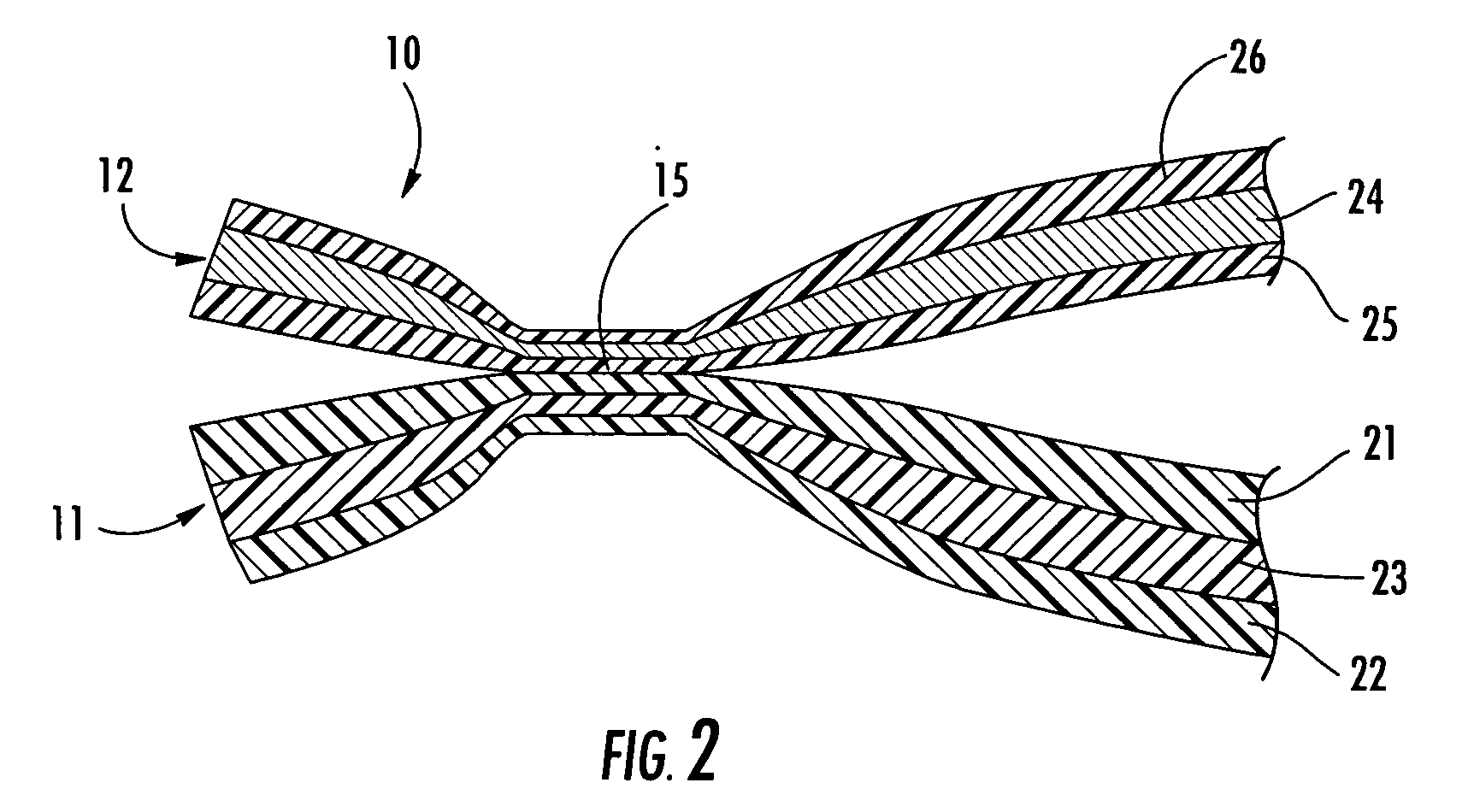Transparent autoclavable bag
a technology of transparent bags and autoclavable bags, applied in the field of sterilization bags, can solve the problems that the success of pctfe films in non-forming barrier applications is limited, and achieve the effect of high barrier properties
- Summary
- Abstract
- Description
- Claims
- Application Information
AI Technical Summary
Benefits of technology
Problems solved by technology
Method used
Image
Examples
example 1
[0025] A dimensionally stable composite film laminate was manufactured by first laminating a 0.48 mil biaxially oriented transparent polyethylene terephthalate (PET) film to a 1.5 mil thick monoaxially oriented transparent Aclar® polychlorotrifluoroethylene (PCTFE) film to form a two-layer composite. Rolls of the PET film and the Aclarg film were each mounted on unroll stands. The PET film was unrolled and directed across a gravure coating apparatus and a 1.5 lb / ream layer of urethane adhesive was applied to one surface. The Aclar® film was unrolled and then brought into contact with the adhesive-coated surface of the PET film, and the films were directed through a nip formed between two smooth surface rolls. A 2.0 mil polypropylene transparent film made using a cast film extrusion process was then laminated to the exposed surface of the Aclar® film by a similar laminating procedure. The resulting composite laminate exhibited high moisture barrier properties and excellent dimensiona...
example 2
[0026] A laminating procedure similar to that described in FIG. 1 was used to produce the following metal laminate: 48 gauge biaxially oriented transparent PET film / adhesive / 35 gauge aluminum foil / adhesive / 2.0 mil cast polypropylene This tri-laminate was positioned opposite the laminate of Example 1, with the polypropylene surfaces facing one another and the two films were contacted with a heat sealing die to seal the two films together into a pouch of the configuration generally similar to that shown in FIG. 1.
example 3
[0027] A metal laminate of the following structure can be produced by a procedure similar to example 2: 0.48 mil biaxially oriented transparent PET film with a coating of aluminum deposited on one surface by vacuum metallization to an optical density of 2.8 / adhesive / 2.0 mil cast polypropylene. A pouch is fabricated from this laminate and the laminate of Example 1.
PUM
| Property | Measurement | Unit |
|---|---|---|
| thickness | aaaaa | aaaaa |
| thickness | aaaaa | aaaaa |
| thickness | aaaaa | aaaaa |
Abstract
Description
Claims
Application Information
 Login to View More
Login to View More - R&D
- Intellectual Property
- Life Sciences
- Materials
- Tech Scout
- Unparalleled Data Quality
- Higher Quality Content
- 60% Fewer Hallucinations
Browse by: Latest US Patents, China's latest patents, Technical Efficacy Thesaurus, Application Domain, Technology Topic, Popular Technical Reports.
© 2025 PatSnap. All rights reserved.Legal|Privacy policy|Modern Slavery Act Transparency Statement|Sitemap|About US| Contact US: help@patsnap.com



